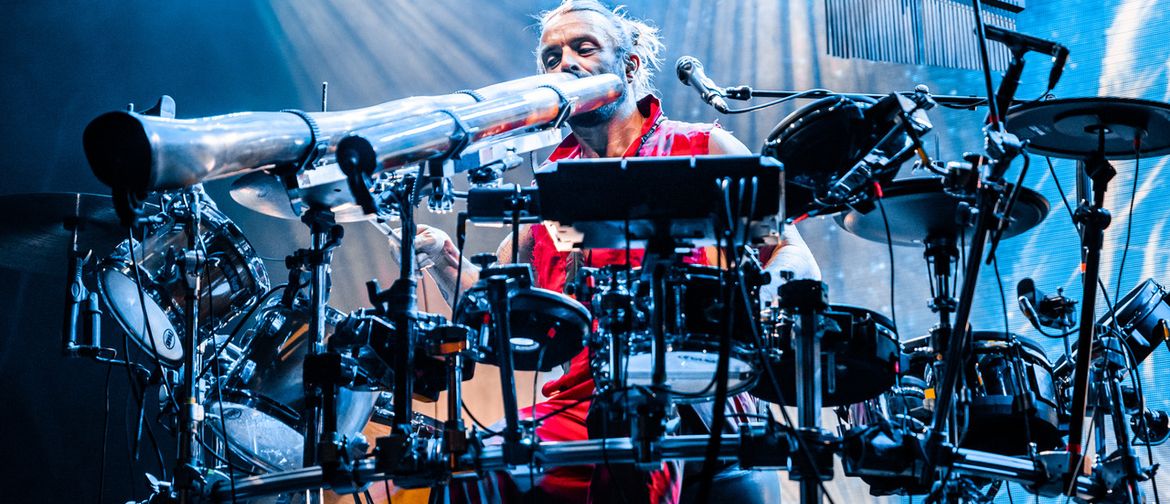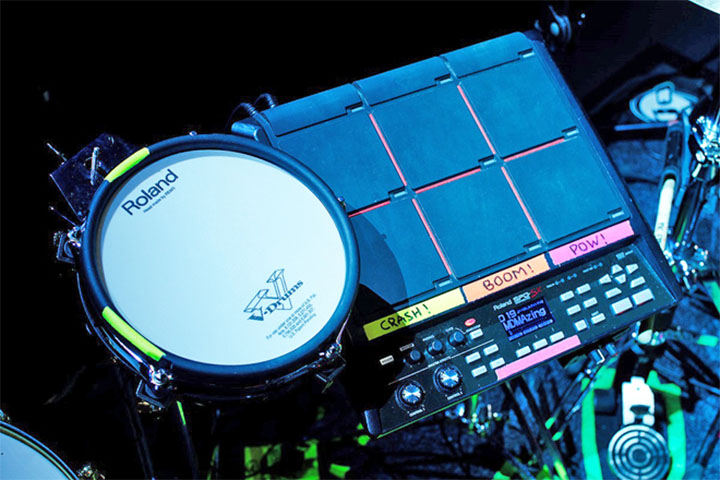KILTER INTERVIEW
PERFORMING WITH A NEW LIVE RIG

Kilter is the moniker of Sydney producer Ned East, a producer who’s been staying busy racking up millions of streams and winning fans with his dynamic live shows over the past few years. Rooted in dance music, Kilter’s sound branches boldly into hip hop, future bass, and house, with songwriting chops that have helped his music leave the bedroom studio and find a home on stages around the world.
We recently caught up with Kilter to chat about his new live rig, with the TR-8S as the beating heart..
Tell us about your approach to building a live rig. Do you build gear around a concept or a performance style, or start with the gear and let it guide the way you play?
When I was playing my first shows and building my first live rig, I was definitely guided by the gear. Or more by what I could afford at the time. As I progressed I would add new pieces until eventually I had build a pretty comprehensive rig. After touring that set up for several years, I wanted to completely overhaul the performance style to create something that is more fluid and would allow me to really interact with my songs in a way that no two shows would be the same.
With that in mind I focused on drum machines and sequencers where all the gear is working in sync rather than playing percussion and synthesisers over track.
How do you balance having enough live elements in a set to make it feel truly “live,” without doing too much and becoming overwhelmed?
That is honestly one of the hardest things to balance, especially when you take into account what most people watching will know about musical, and especially electronic, equipment. You definitely get the most bang for your buck focusing on one or two elements and really showing them off, like what I used to do with the live drumming.
I’ve definitely bitten off a lot by having control over every aspect of my songs; from the drum patterns on the TR-8S, synth parameters across the rack synths, arrangement on the Octatrack sequencer all the way to the mix itself on the Mackie. The saving grace is that because it is so fluid I could essentially decide to park on a 4 bar groove and tweak to my heart’s content and just enjoy the moment haha.
How does your live rig differ from your production rig?
The only parts of the live show that I use in the studio are the synths. I would probably get a lot more done with a sequencer-based workflow but I like to take the long way around.
It is quite fun firing up the live rig in the studio though as programming the synths through the sequencer seems to yield more interesting writing than playing things in via keyboard.

Why did you choose the TR-8S as your live drum machine?
Initially, I wanted a 909 but realised the TR-8S was really the perfect choice as it has some really amazing performance features with delays, reverbs, and high/low-pass filters as well as allowing me to load in my own drum sounds.
Just as importantly though, as the first piece of gear in the chain, it sends out a reliable master clock that can be changed without menu diving and has a lot of flexibility in the way in which it talks to the other pieces of equipment.
Tell us about how you’re using the SP-404 in your setup?
I’ve used an SP-404 in every single show I’ve ever played! I’m currently using the 404 to trigger sample hits like vocals phrases, fx samples and anything that I don’t want repeating in the sequence. It also has all the longer samples; acapellas, risers and entire breakdowns. When I have a good groove going across the other gear, the 404’s built in effects are great to create interest with additional samples.
Why did you choose to go DAWless for this rig?
I did play around with the idea of using a DAW as the central hub because I thought it would make programming the songs from scratch easier and was more flexible as far as connectivity goes but there were so many issues and unexplained glitches that I ditched it. I’ve always been DAWless and am kind of scarred for life from the few times I’ve incorporated a laptop into my show. The Octatrack was honestly eye opening in it’s capabilities as the brain of the show and I even found it’s limitations to be great parameters for the show’s development.

How is the experience of performing live different from a DJ set for you?
Performing live has more emotional highs and lows. When it’s going great it’s the best but when you have a gig where something goes wrong or whatever the issue may be you it’s tough. DJing on the other hand is just fun. You get to play other people’s music that you love and you can really go in any direction based on what the crowd is into. Part of the inspiration behind the new live rig was to bring some elements that I love about DJing across to the live show. Things like more interchangeable arrangements and a more club orientated sound palette.
I can see that you’ve got a BOSS DD-7 pedal in your setup too, how are you using that?
I’m using it as a send from the Mackie mixer. I throw everything through the analogue delay, the MAM mb33 sounds especially amazing through it.
You mentioned that you built this rig during lockdown. How was the experience of prepping a set while being so disconnected from live music?
One of the few upsides of being in lockdown was that I had the time to execute the concept without still having to maintain my old set up. The disconnect from live music probably led me to making quite an indulgent show, but at least I’m having fun!
Speaking of lockdowns, how did you stay inspired during that time?
Lots of walks around the area and having the time to learn about random things. I also think that building a live show during this time worked quite well because it took a different sort of creativity compared to writing music, more technical so no getting stuck with writer’s block.
Can you talk a bit about what it was like playing in front of people again after so long away from the stage?
It was definitely nerve-racking, especially playing a brand show but was so good to be back. Hopefully we are out of the woods and can get back to touring without nightmare interruptions and restrictions.



